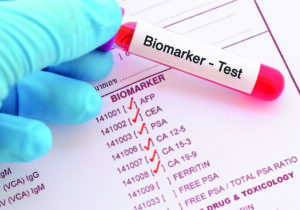3 Health Conditions That Indicates You Are Pre-Diabetic
4 min read
According to the American Diabetes Organisation (ADA), more than 30 million Americans in the United States have diabetes. Glucose levels or sugar levels in your blood need to be under control for healthy living. A typical healthy individual has the pancreas secreting the insulin when your sugar levels are surging, for instance after a meal and due to the breakdown of the calories. Now, those sugar levels are brought back under control by the insulin.
If you have diabetes or in a pre-diabetic condition, the level of insulin is either insufficient or completely unavailable to regulate the glucose levels resulting in severe complications. In this article, we explain in detail the importance of glucose levels, symptoms of the prediabetic condition, and how to avoid becoming a diabetic.
What are Glucose Levels?
Glucose plays a vital role in the body as it is an important source of energy for various activities including developing muscles and tissues. Insulin is a hormone injected into the blood by the pancreas that helps the cells to intake the glucose and store them for future use. A healthy adult should have blood glucose levels standing between 90 to 110 mg/dL, anything higher or lower indicates a malfunction in insulin secretion or management.
The carbohydrates in food cause blood sugar levels to go up after meals due to the digestion process which breaks them into sugar. Insulin acts as a “bridge,” by absorbing and storing the excess sugar and converting it back when required by the body, for instance when the sugar levels go down.
What Causes Diabetes?
Diabetes mellitus, generally known as Diabetes, is a metabolic condition where there’s either a problem with the pancreas producing insulin (type 1 diabetes), or the cells cannot use the insulin effectively (type 2 diabetes), or both. Over time, if it is not addressed it can damage nerves and blood vessels and lead to heart disease and other problems.
Types 1 Diabetes
- The pancreas is unable to secrete enough insulin for the cells to absorb glucose
- Type 1 is an auto-immune disease and it is very rare
- It results in high blood glucose levels causing this chronic condition
- This condition is called “Secondary Diabetes”
Types 2 Diabetes
- Type 2 Diabetes is the most common type of Diabetes.
- The pancreas produces insulin, but the insulin is not effectively used by the cells to store the glucose
- It is a long term (sometimes life-long) condition that occurs because of the body’s resistance to insulin
- There is no cure for type 2 diabetes even today
Symptoms of Pre-Diabetes
Prediabetes is a condition where your body is signaling with some symptoms that you are transitioning to the diabetic phase. When you are prediabetic, the blood sugar levels are high but not high enough as a type 2 diabetic condition. If you are prediabetic then you are at a higher risk of developing type 2 diabetes.
Following are some symptoms you can experience during prediabetes –
1. Increased thirst
Excessive thirst is one of the first signs you will encounter being in a prediabetic condition. Uncontrolled blood sugar levels are the underlying cause of increased thirst. It is also more common with people having type 2 diabetes.
2. Frequent urination
Followed by increased thirst, you would be going to the bathroom back and forth frequently to eliminate the urine. Drinking more water and frequent urination is caused by high sugar levels, as your body is trying to eliminate the excess sugar which causes you to visit the bathroom more often.
3. Fatigue
Fatigue is one of the most commonly seen symptoms in a pre-diabetic phase. If you are experiencing increased thirst, frequent urination, and fatigue, then the chances are high that you are transitioning to being diabetic which is also known as prediabetic.
How to Avoid Becoming Diabetic?
If your body mass index is higher than 25, and having additional risk factors, such as high blood pressure, abnormal cholesterol levels, a sedentary lifestyle, a history of polycystic ovary syndrome, or heart disease, you can expect to become diabetic.
The Hemoglobin A1C is a metric obtained to get the average level of blood glucose in the past three months in your body. It comes in handy to check if you are diabetic or moving towards being a diabetic. The HbA1c test can indicate your condition way before you enter the disease and helps to take appropriate steps to avoid becoming diabetic.
Avoid the following food types in your diet.
- High sodium
- Sugar
- Saturated
- Trans fats
- Calories
If you are older than 45 years of age, it is highly recommended to get an initial blood sugar screening, and then, if the results are normal, to be screened every 3 years thereafter. This way you can get hold of the pre-diabetic phase earlier before it turns out to be a disaster.
Conclusion
A combination of proper diet and regular exercise (even walking or yoga) can help you to reach and hold normal blood glucose levels. It is always our lifestyle habits that determine our long-term condition. If you have diabetes, monitoring your blood glucose levels at least once every two years is an important step in managing your diabetes.







